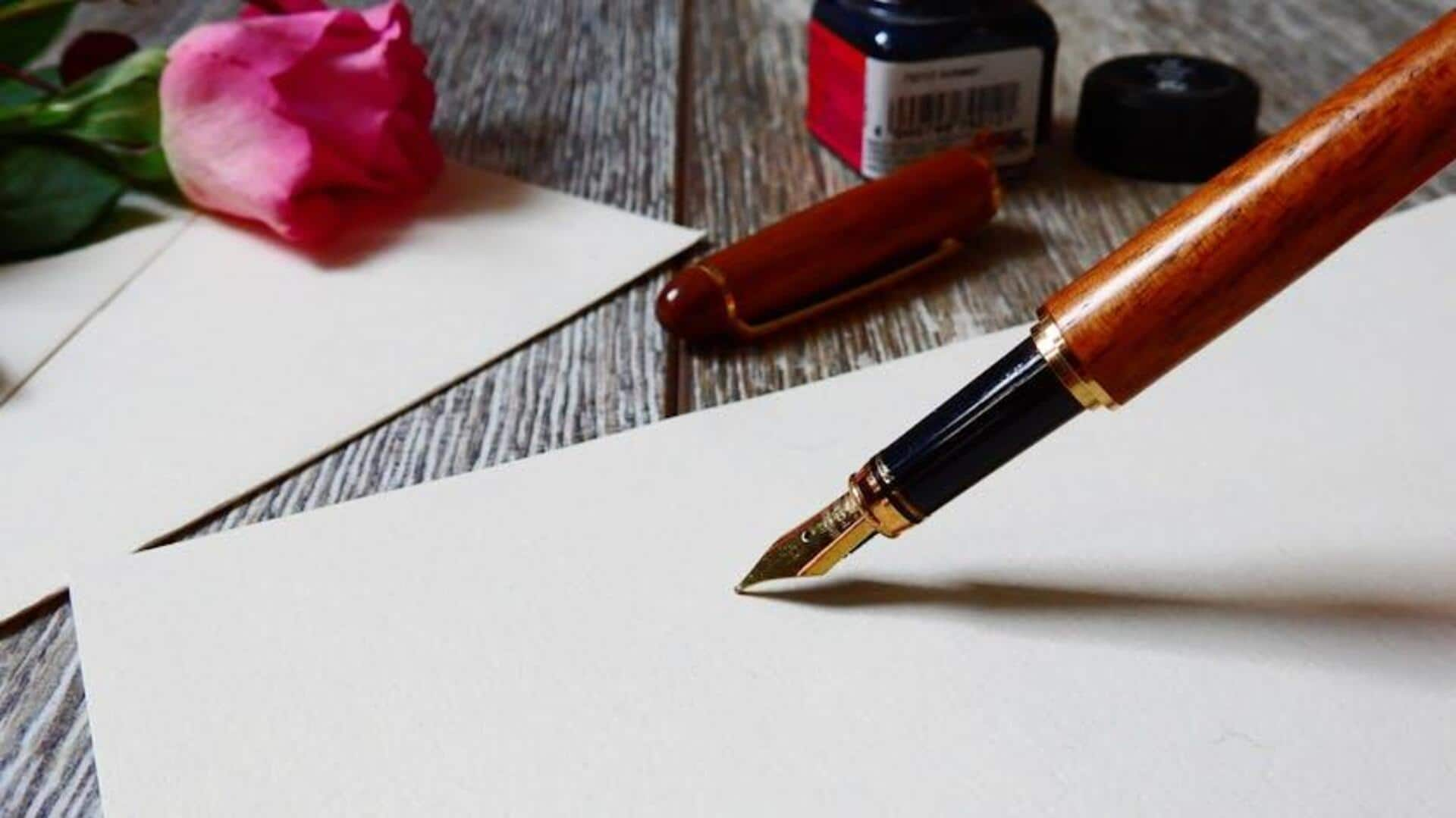
Writing an important letter? Read this first
What's the story
Although letter writing has become a rare phenomenon in today's digital age, it remains one of the most powerful ways to connect with others. It adds a personal touch, which is often missing in electronic communication. Knowing the nuances of letter-writing etiquette can make these connections even more meaningful and impactful. Here are five surprising etiquettes that can turn your letter-writing experience into something truly special.
Materials matter
Choose the right paper and ink
The selection of paper and ink can heavily impact how the recipient perceives your letter. Choose a good quality paper that feels heavy. The ink color should be legible; black or blue is usually preferred for its readability and formality. These choices show the letter's recipient how thoughtful you are and that you respect them.
Legibility counts
Mind your handwriting
In this day and age of typed text, legible handwriting is a mark of sincerity, not to mention effort. Take your time to write clearly, making sure every other word is readable. If your handwriting is generally hard to read, practice or use lined paper as a guide.
Tailored salutations
Personalize your greeting
Personalizing your greeting in a letter is extremely important. Instead of going for generic salutations like "Dear Sir/Madam," it's much more impactful to use the recipient's name when you can. This not only shows you've paid attention to detail but also greatly boosts the reader's feeling of being valued from the onset. It sets a welcoming tone for your message, making it more relatable to them.
Balance in words
Be concise yet thoughtful
Expressing yourself in full glory, yet being concise is critical in letter writing. It keeps your message clear and engaging from beginning to end. Don't add unnecessary details that might eclipse your main points. Rather, add just enough context to make your thoughts clear without creating any ambiguity. This balance keeps the reader's attention and carries your message across.
Closing remarks
End with a personal touch
The closing of a letter is what stays with its reader. Utilize this opportunity to strengthen personal connections by adding something specific about them or recalling shared experiences or future plans together, if any. This adds warmth and depth beyond mere formalities like "Sincerely" or "Best regards."